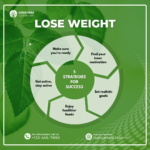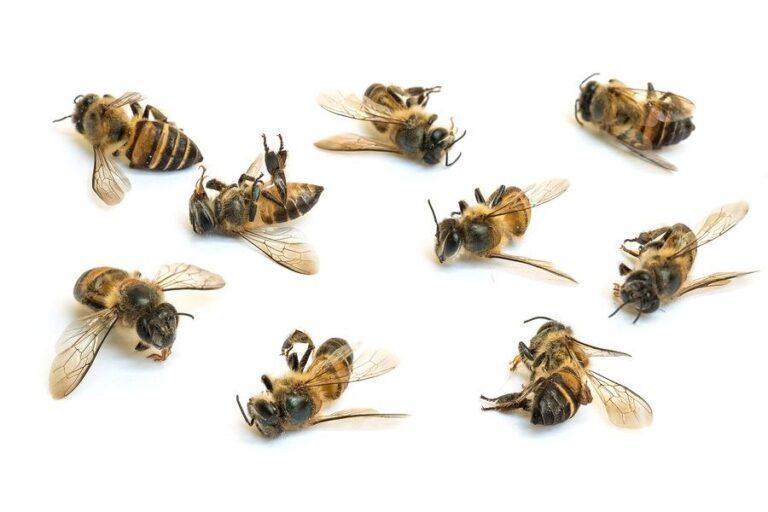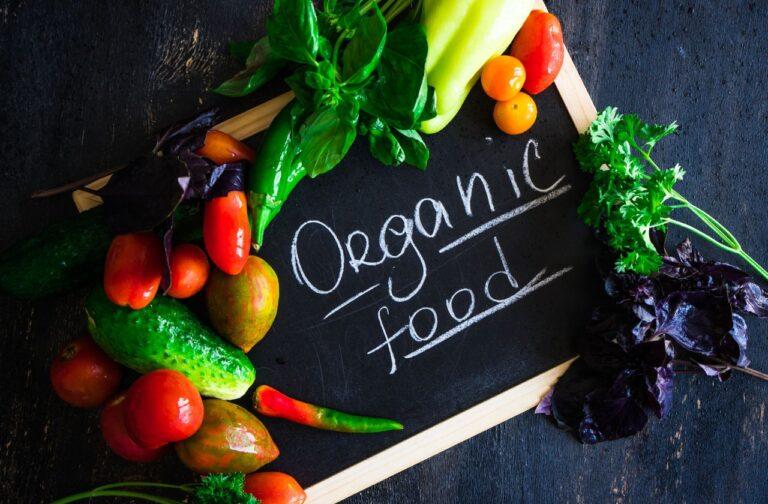Health Nutrition & Diet Healthy Eating How to Start Eating Healthier: 13 Attainable Tips From a Registered Dietitian Not a restrictive food rule in sight. By Maggie Seaver Maggie Seaver Maggie Seaver is the digital health and wellness editor at Real Simple, with seven years of experience writing lifestyle and wellness content. She spends her days writing and editing stories about sleep, mental health, fitness, preventive health, nutrition, personal development, relationships, healthy habits, and beyond. She loves demystifying complicated health topics, debunking wellness fads, and sharing practical, science-backed solutions for healthy living. Real Simple’s Editorial Guidelines Updated on January 12, 2024 Trending Videos Photo: Ilka & Franz/Getty Images What does it really mean to “eat healthy,” to follow a “balanced diet,” to make “smart nutrition choices”? The truth is that everyone’s appetites, preferences, health goals, nutrition needs, and lifestyles look completely different. Not only that, but one person’s needs inevitably evolve over time, even from one day to the next. In order to start—and keep—eating healthy foods that give your brain and body energy, your approach needs to be extremely personal, gradual, flexible, and open-minded. “My definition of healthy eating, both personally and professionally, is striking the right balance of eating nourishing foods that help me feel my best—physically and psychologically,” says Jaclyn London, RDN, New York City–based registered dietitian, consultant, and author of Dressing on the Side (and Other Diet Myths Debunked): 11 Science-Based Ways to Eat More, Stress Less, and Feel Great about Your Body. “The word ‘balance’ has become a bit hackneyed these days, but ultimately, that’s the feeling that your eating pattern should cultivate: a sense that you’re consuming foods in the amounts you need to feel satisfied, not stuffed.” What does that healthy balance ultimately look like? “Lots of produce, lean protein (especially seafood), legumes, 100% whole grains, nuts, seeds, and other heart-healthy fats, plus room for real desserts and cocktails built-in.” People often set unattainable, unsustainable, or downright harmful goals in an effort to start eating healthier and make drastic changes to their health overnight (which is not possible!). “It’s my point of view that prioritizing personal health and well-being is not a place or a destination. It’s a journey that is 100% guaranteed to change over time,” London says. “This means that what works for you today, this week, or this year may not continue to work for you [next year]—and that’s OK!” If you really want to develop good-for-you eating habits, and understand how to eat, drink, and feel better—to support your entire body with food that nourishes you—London shares achievable, modifiable, and no-nonsense tips for how to start eating healthier now and forever. 7 Strategies to Form Healthy Eating Habits, According to RDs 01 of 13 Eat breakfast every day. If you’re starving and running on fumes by mid-morning, it’s time to start eating a regular breakfast. Going hungry all morning to “save up for later” typically ends in energy crashes, cravings, moodiness, and suboptimal food choices throughout the rest of the day. Adding in a wholesome (and simple!) morning meal, consisting of “an energy-sustaining combo of protein, fiber, and good-for-you fat,” London says, is far better for you than skipping this step. Eggs (scrambles, omelets, sandwiches), plain yogurt, oatmeal or chia puddings, whole wheat toast, nut butters, fruits and veggies (yes, veggies!), and even savory leftovers are all delicious options. 02 of 13 Do a beverage audit. Drinks are often a sneaky supplier of added sugars, so take a look at what you’re sipping on throughout the day and assess where you can make realistic changes. “This is the single most effective thing I can recommend anyone start doing,” London says. “Take a good, hard look at your beverages and what you typically drink each day. If you’re choosing ones with added sugar, replacing these with unsweetened beverages can often have the biggest impact on your overall state of health and well-being.” No need to torture yourself or cut out sweetness cold-turkey. Start slowly by drinking one less soda per day, or even per week; ask for one pump of syrup in your latte instead of two or three; drink a small orange juice instead of a large; or order a coffee with frothy steamed milk (café au lait or misto) for a luxurious morning treat. 03 of 13 Combine protein and fiber at each meal, as often as you can. “Research shows that this combination of nutrients helps to promote satiety, helping you feel fuller, longer,” London says. Her favorite sources of fiber include: “veggies and fruit, 100% whole grains, legumes, nuts and seeds (the latter three will also provide protein!).” And she recommends these lean protein sources: “eggs, seafood, poultry, lean cuts of beef, and unsweetened dairy products (plus the plant sources mentioned above—nuts, whole grains, seeds, legumes). This Is How Much Fiber You Really Need a Day—and How to Eat Enough of It 04 of 13 Eat regular meals and snacks (no skipping!). Ever notice how it’s harder to control your mood, appetite, and eating habits when you’re starving? It’s called “hanger” for a reason! Instead of letting yourself get to the point of being ravenous, which is totally uncomfortable—and makes you sluggish and unproductive, to boot—honor natural hunger cues and nourish yourself accordingly throughout the entire day. “Eat regularly and consistently choose to have a snack or meal every three to four hours,” London recommends. Again, including a combo of protein, fiber, and fat sources will make each meal/snack even more satisfying. 05 of 13 Add one fruit or vegetable every time you eat. What if we approached the goal of “eating healthier” with a mindset of addition, instead of subtraction and restriction? Focus less on what to avoid or reduce, and start prioritizing adding more of the good stuff. “Challenge yourself to include a veg or fruit at each meal and snack. Remember that canned, fresh, or frozen are all great options for produce,” London suggests. “This will help you reap the benefits of fiber from produce (reminder: juicing removes that entirely!), plus water and antioxidants, and it’ll also help you displace less-nutritious items you might’ve otherwise chosen to include on your plate at that eating occasion.” The fiber in plants, like colorful fruits and veggies, helps slow down digestion, helping to keep your blood sugar levels more stable and your belly satisfied for longer. “Start small and keep it simple. However you can weave more into your day, that’s what’s right for you right now (and you can always build up from here),” she adds. And another note: If you really hate something, then don’t force it down. If you loathe kale salads, you loathe kale salads—accept that and move on! 06 of 13 Identify what your body is telling you—and listen to it. As London puts it, “rule out physiology before taking action.” Do you immediately reach for foods and drinks to satisfy impulse cravings, or eat on autopilot out of habit or boredom? A more mindful, thoughtful approach can help you pause and assess what you need in the moment. Are you thirsty? Hydration is important in its own right, plus feeling peckish is often an unexpected symptom of mild dehydration. Try drinking 16 ounces of water or another unsweetened beverage of your choice. If you’re still hungry in a few minutes, eat! Are you super-hungry and low-energy? “Aim to eat consistently every three to four hours, and choose snacks that combine protein and fiber to keep your energy and hunger levels stable throughout the day,” London says. Or is it sleep that you need? “Time for a little caffeine, 15 minutes of outdoor time, or a nap if that’s available to you—whatever you define as energizing, do that,” she says. (London recommends following general caffeine guidelines of no more than 400 mg per day (less if you’re sensitive to it), which totals to roughly a Venti (20 ounces) at Starbucks.) And if it’s nighttime, that’s a no-brainer: Get yourself to bed. 07 of 13 Stop calorie counting and cutting. Calories are not a unit for measuring the healthiness or nutritional benefits of a food. Some of the most fueling, satisfying, life-supporting, nutrient-rich foods are higher in calories—as well as good fats, fiber, protein, vitamins, and minerals (hello, nuts!). “People drastically cut back on total calories without making adjustments to consume more nutrient-dense foods,” London says. “They wind up looking incessantly at Nutrition Facts labels and studying menus, only to feel defeated and hungry 24/7.” 08 of 13 Don’t restrict an entire food or food group. Restrictive eating is a no-go. You not only lose out on key nutrients your body needs this way, but it’s also a psychological trap: You always want even more of what you say you can’t have. Gradual, small, realistic changes that challenge you, but still keep you satisfied are typically best and easiest to stick to long-term. “Excluding a nutrient or food group in your everyday eating pattern results in something I coined, “full-not-satisfied-syndrome,” (FNSS), which can lead to consuming more than you need due to the absence of satiety,” London says. She adds that it can also lead to other less-optimal habits like: “choosing ‘plant-based’ products that are less nutritious than their original animal-based counterparts, or simply spiraling down social media rabbit holes for restrictive eating styles.” The 7 Healthiest Carb-Filled Foods to Eat, According to a Registered Dietitian 09 of 13 Steer clear of detoxes and cleanses—they’re gimmicks! “If you have a functioning gut, liver, and kidneys, you don’t need to detox. Your body does this for you all day, everyday,” London says. “And if those aren’t functioning so great, it’s time to see a specialist, ASAP—it’s not something a juice [cleanse] is going to fix.” 10 of 13 Avoid 30-day food challenges. This semi-competitive, cold-turkey format may be a genuine motivator for a small subset of people, but anyone who wants to create lasting lifestyle shifts for the sake of their overall health should consider otherwise. “How is trying something extreme for 30 days helping us establish new patterns that create better health and well-being for the long haul?” she says. “This can kickstart a pattern of weight-cycling (in which we’re constantly gaining and losing significant body weight over time), which has serious side effects, including metabolic abnormalities, cardiovascular disease, diabetes, and depression/anxiety.” 11 of 13 Choose nutrients from real foods over supplements. London recommends eating real foods for proper nutrients, rather than turning to supplements for a quick-fix. “While they have a place and can be crucial for many of us…supplements are not food—they’re there to supplement the food you’re already consuming,” she says. “What’s more, there are plenty of reasons to be wary of the supplement industry at large (less regulation, sometimes-questionable ingredient sourcing, and an industry-wide lack of transparency).” 12 of 13 Don’t forget to move. “There’s no such thing as a ‘perfect’ physical activity routine,” London says. “Find ways to build movement into your day that are challenging, but still work within your schedule. My personal favorite is a walking meeting—try it with a co-worker this week!” 13 of 13 Remember that you’re human; and food is just food. London’s final pearl of wisdom is to be kind to yourself and remember that “no single meal, snack, dessert, or day or week of eating can make or break your health—it’s what you do most of the time that matters when it comes to your state of health and wellbeing.” Remember, too, that all food is just food, and there isn’t one morally “right” or “wrong” thing or way to eat. Food is not only for supporting your health and ingesting certain nutrients. It’s for pleasure, celebration, socializing and connection, curiosity, energy, happiness, and so much more—all of which contribute significantly to your well-being too. What to Eat for a Longer Life and Lasting Health Was this page helpful? Thanks for your feedback! Tell us why! Other Submit
This content was originally published here.




















